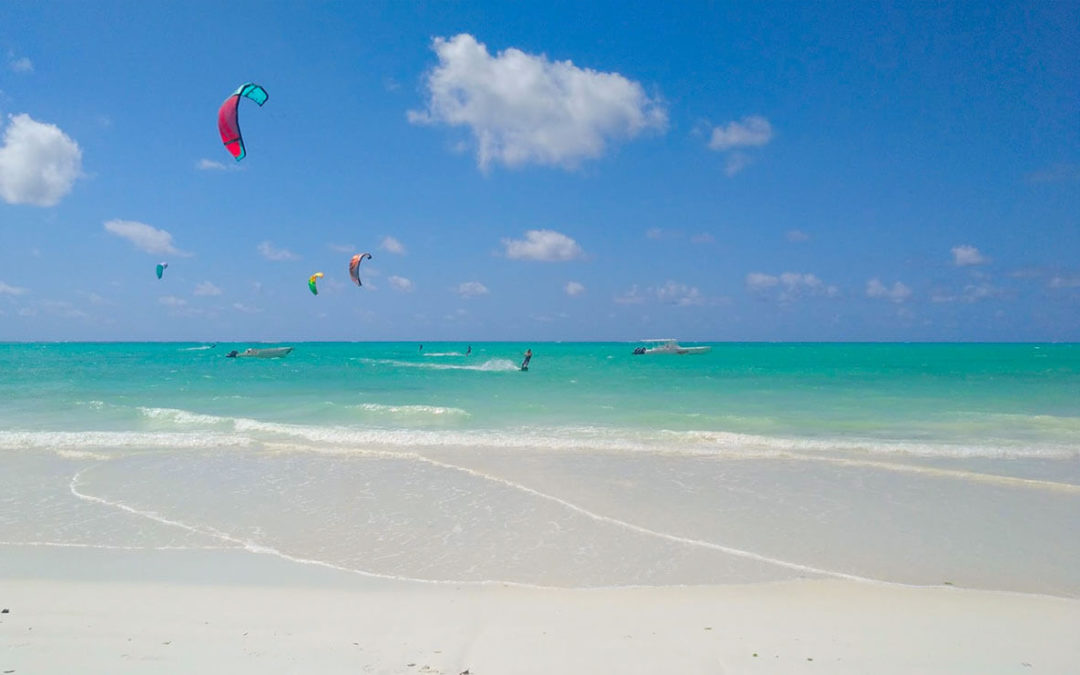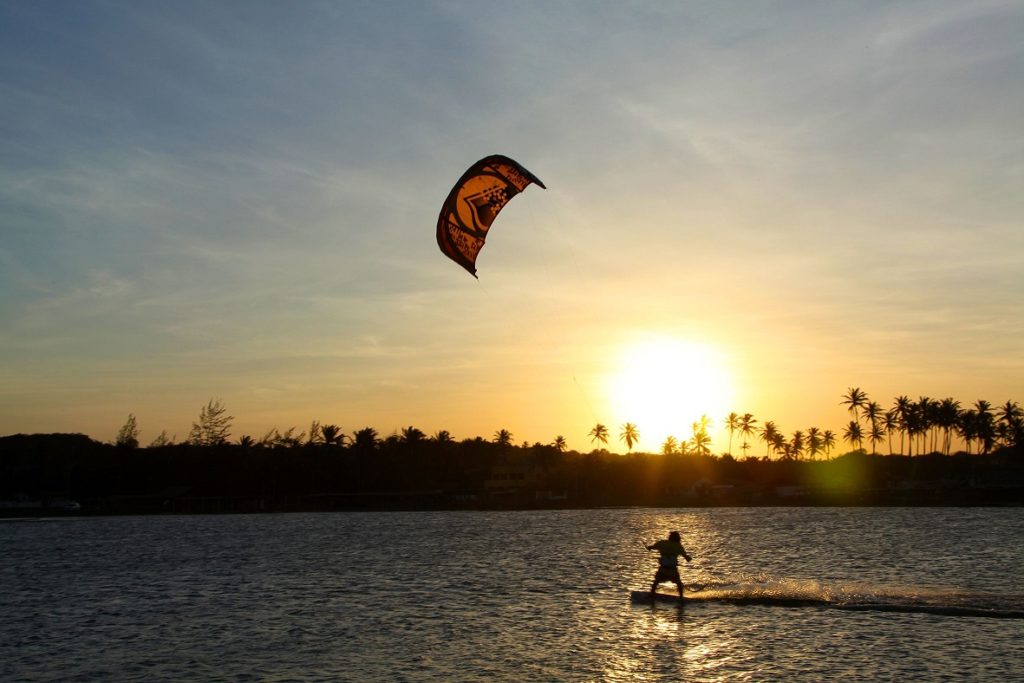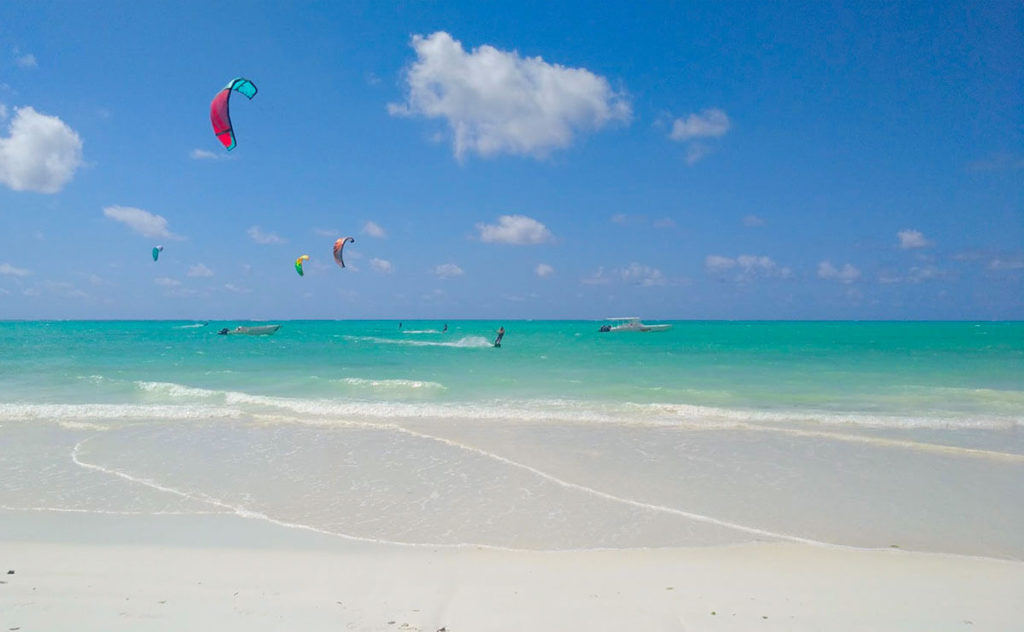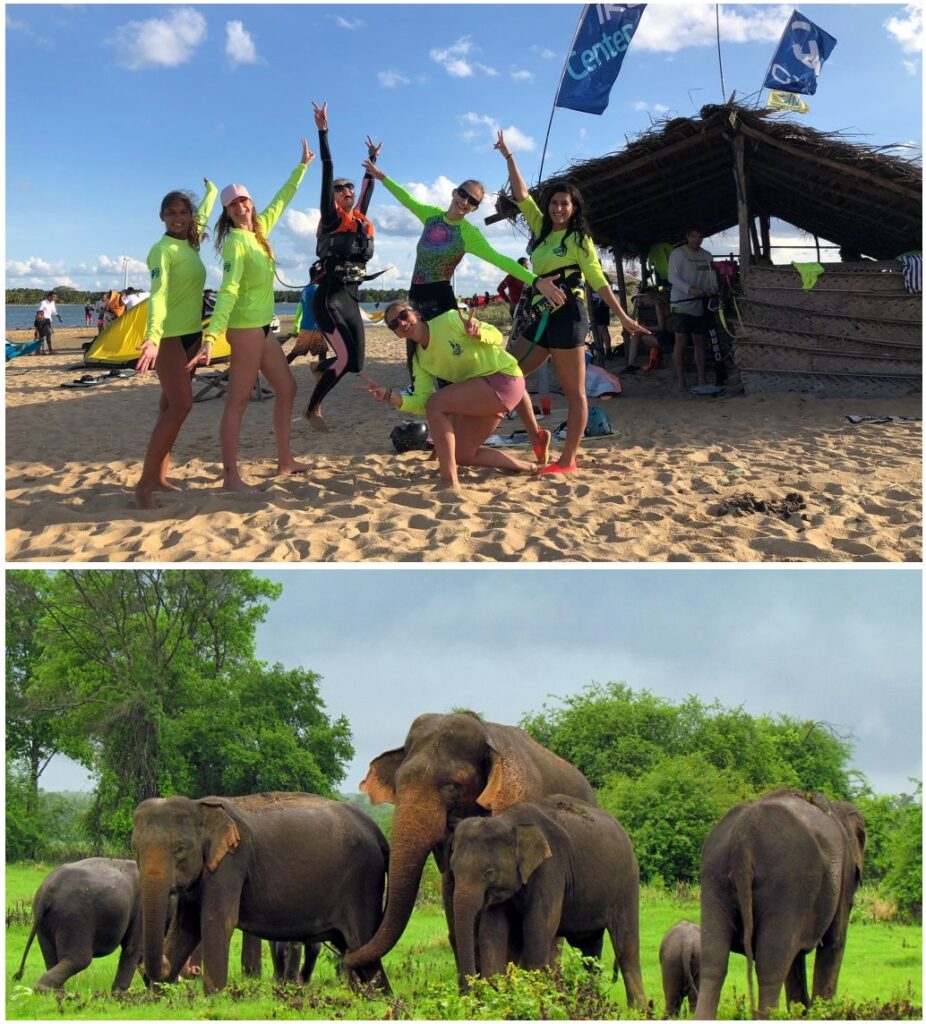Best Places to Learn to Kitesurf
There are not many things in this world that can give the same adrenaline rush, as the exhilarating experience of kitesurfing. Harnessing the wind’s power to glide across the water surface, and be lifted high into the sky, is unlike any other past time available.
This can only happen of course, if you can get the right kitesurfing location. Are you wondering what are the best places to learn kitesurf? This guide will help you to decide about your next kitesurfing destination if you wanna learn to kite in the best conditions!!
What makes for the perfect location to learn kitesurfing? Normally, a delightful blend of a picturesque, postcard-worthy location, dreamy, crisp beaches, flat, still water with warm weather and ideal wind conditions make the ideal place for beginners.
In reality however, that is not quite the case. Whilst some of the aforementioned features may make for a nice setting, and offer some practical tips on learning to kitesurf, that does not mean they are necessary to learn how to kitesurf.
Every kiteboarding spot has slightly different circumstances, while it’s true, that some places may appear better for beginners than others, the truth is that almost every location offers beginners the chance to practice, and improve their skills.
Don’t forget that in order to be a fully independent rider; you will have to learn to Kitesurf in a variety of different places, not just at one spot.
In the meantime, however, we have created this guide, to show you the very best kitesurfing spots in the world for beginners and the best places to learn this extreme sport!
“Learn kitesurfing in Sri Lanka with Margarita kite school”
What Should We Look for in a Kitesurfing Spot when we start learning?
Flat vs Rough water
When it comes to learn kitesurfing, there are a few different things that we should take into account. One of which is the difference between learning to kitesurf on flat water, and learning to kitesurf rough water.
Without the additional distraction of the waves, beginners can focus on the mechanical movements required when determining the skill. For example, they can focus on the kite skills primarily, then body dragging skills, before moving on to board recovery and more complex board skills.
On the other hand, the dynamic of wave water presents a more significant challenge to beginners but allows them to develop critical kitesurfing skills such as body dragging and board recovery in a quicker manner.
Learning to Kitesurf in waves teaches beginners how to position your body in the sky, as well as the crucial ability to “read the waves”. Once a beginner has sufficient experience in choppy waters, they can begin to anticipate appropriate timings in the water, allowing for a smoother and seamless surfing process.
In case you are interested in discovering flatwater spots to learn kite, here you have a guide with the best flatwater kite spots in the world.
Deep Water vs Shallow Water
Another factor which should be considered is learning to Kitesurf in deep water vs shallow water. The difference between these two variables can have a significant impact on the rate at which you can acquire the skill. Learning to Kitesurf on shallow waters allows you to stay more “grounded”, whereas deep waters can allow you to practice body dragging and board recovery, two essential skills when learning the craft.
Strong Winds vs Light Winds
You may also wish to take into consideration whether you should learn to kitesurf in strong winds or light winds. The benefit if strong winds are apparent. The wind can help you move faster when your kitesurfing, however, it comes at a cost, because every kitesurfer must learn to surf without winds too. Imagine you were kiting in strong wind conditions, and suddenly the wind died down! Low windsurfing skills and strong wind skills are essential for every kitesurfer.
So, now that you have understood exactly what makes the perfect spot to learn to Kitesurf, here are the ten best spots to learn to Kitesurf for beginners.
TOP TEN LOCATIONS TO LEARN KITESURFING
Down here we have enumerated what are the best places to learn kitesurfing in the world! We hope this guide will help you when choosing your next destination to learn kitesurf.
1. Kalpitiya, Sri Lanka
Situated two hours north of Colombo, on the North eastern coast of Sri Lanka, Kalpitiya is not quite as common amongst tourists compared to the other beaches In the region. In Kalpitiya you will not find the most crystalline waters, but you will find the best wind for kitesurfing in Asia
Kapitiya lagoon is speared from the Indian Ocean by a long sandbar, and is a great place for beginners to learn to Kitesurf. The shallow lagoon is perfect for beginner riders who want to learn the ropes. If you’re looking for more of a challenge to develop your surfing skills however, you can head out to the Indian Oceans, where your cross, onshore winds, clear waters and breathtaking waves will push your skills to their limits.
Furthermore, in Kalpitiya we have wind almost all the year around. The main kite seasons are from May to September with almost daily wind from 18 to 25 knots and from December to March, with very consistent winds on the afternoons from 14 to 20 knots!
A part from Kalpitiya lagoon, there are other breahtaking and friendly spots to learn kite in Sri Lanka. Take a look into all the kitesurfing spots that you can find in Sri Lanka
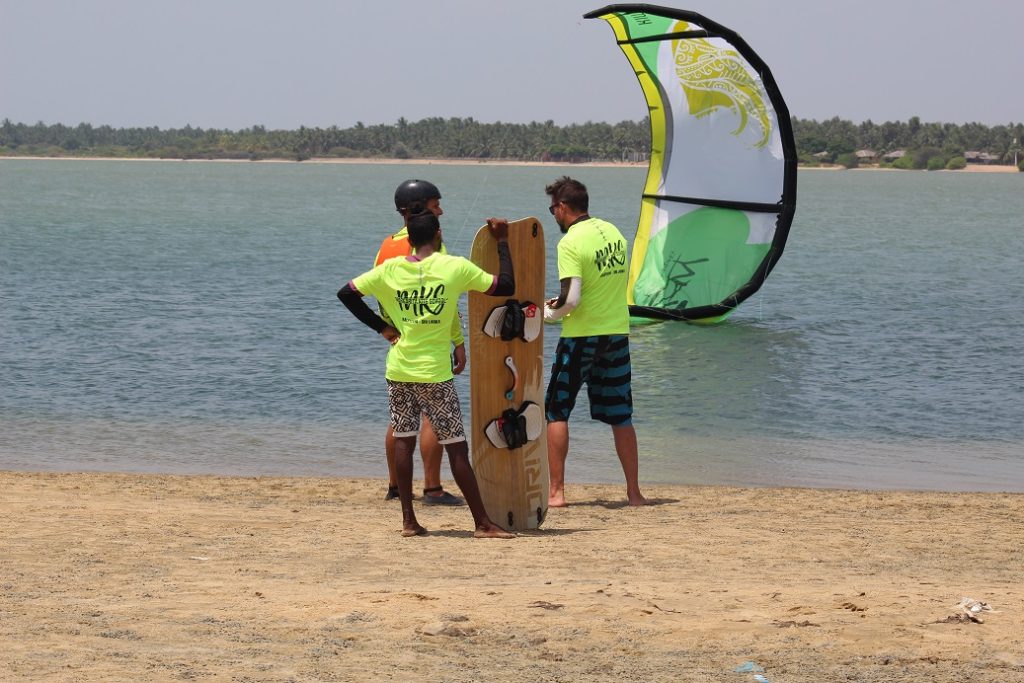
2. El Gouna, Egypt
El Gouna is a Holiday resort and probably one of the best spots to learn kitesurfing in the world. The conditions to learn kite are perfect : very steady wind , flat and shallow water. The zones for beginners are delimited which will help a lot in your learning and you will not have to be aware of other kites.
Immense lagoon protected by a coral reef, the conditions for kitesurfing are spectacular. The area where kitesurf schools are located is the Mangroovy area. To get to this area you will need to take a tuk-tuk worth 1 euro / pers.
You cannot surf for free in front of the kitesurfing schools since each school has its own beach. Even if you already know how to navigate, you will pay about 50 euros / week for sailing in your area, leaving equipment and rescue boat. If you go to the end of Mangroovy beach you can sail without paying.
A problem of kitesurfing in El Gouna during the summer is the tides. During low tide the water could be too shallow for a safe practice.
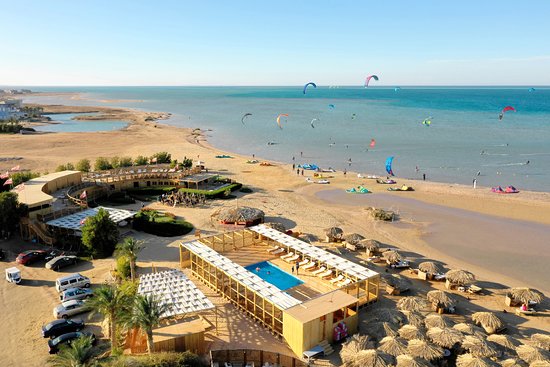
3. Dahkla – Morocco
About 20 or 30 minutes by car from the town of Dakhla, there is a huge lagoon with unparalleled conditions for windsurfing or kitesurfing: flat, obstacle-free water and a good part of it. It is ideal for beginners or those who want to get new maneuvers. In addition, there are numerous spots, some of waves, outside the lagoon.
The desert climate offers good temperature and reliable winds practically all year round with a constant 4-6 force in the winter months and even 7-8 force in the central summer months. And all this in a spectacular natural area still virgin, ideal to disconnect from the world.
This lagoon is an unbeatable place to learn to kitesurf, take out maneuvers or just navigate. The flat water is assured and the virgin environment makes the wind very constant.
Those who have more experience and want waves can jump to other nearby places offered by the Atlantic Ocean.
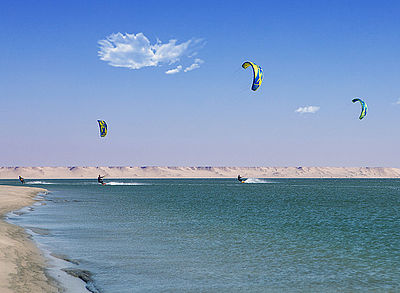
4. Le Morne – Mauritius
Le Morne is one of the most popular places in Mauritius and recognized worldwide. The famous mountain of Brabant creates a turbine effect that intensifies the wind and when other points do not work, here you always have wind. Le Morne Kite Beach has a wide lagoon with the perfect conditions for beginners and small waves for whoever wants to progress in wave riding!
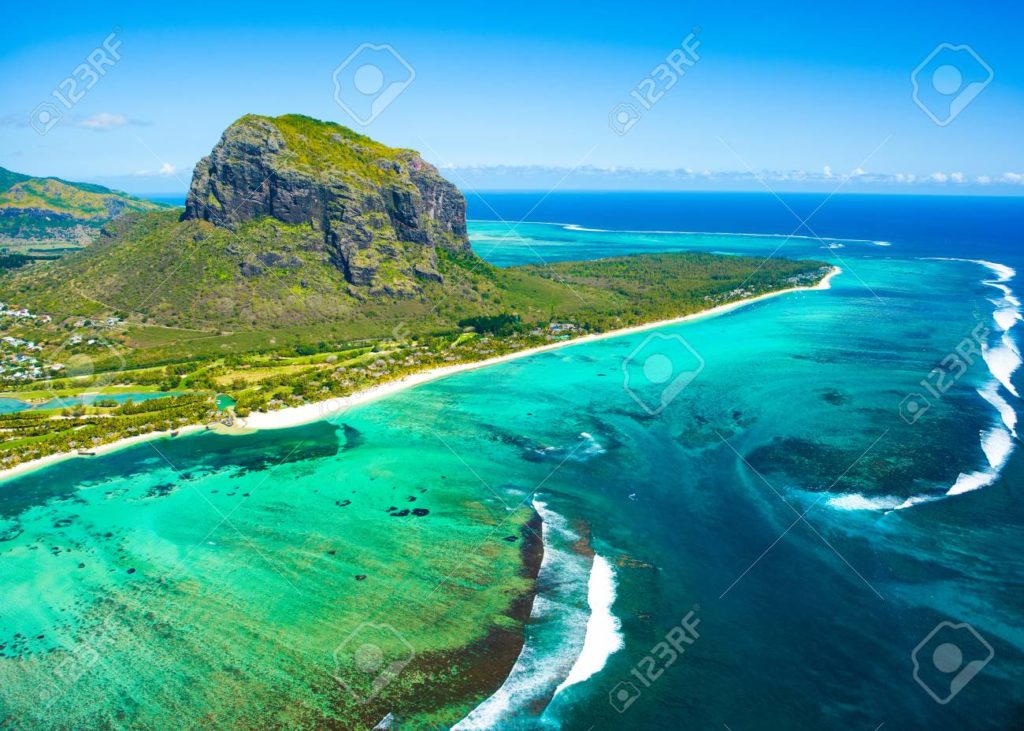
5. Cumbuco, Brazil
Known to be Brazil’s kiting capital, the region of Cumbuco in the North-East receives cross-shore winds and a considerable amount of sunshine during all four seasons. The shallow, flat lagoon near the shore is perfect for beginner surfers, while the choppier waters further offshore can push even the most talented surfers to their limits.
Cuipe Lagoon is known to be the most popular kitesurfing spot in Cumbuco. Southern parts of the lagoon are dedicated to beginners, whereas the north of the lagoon is where the more advanced surfers can perfect their craft. It’s best to come to the lagoon either early in the morning, or possibly, late in the afternoon as it’s quieter. It’s worth noting as well, that wind speeds do tend to lower during the evening hours, making for some laid-back, sunset surfing sessions.
6. Boracay, Philippines
Known to be South East Asia’s hot spot for beginners who want to Kitesurf. Boracay in the Philippines, is popular for its tropical climate, still bright water, and its crispy white beaches. This is truly the a fantastic destination for beginners who want to improve their skills and relax at the same time.
The central kiting spot on the island is Bulabog Beach. This beautiful lagoon offers calm & steady waters that make ideal conditions for beginners. For those looking for strong winds, the best time to go is during the morning, where it’s calmer, and there are fewer crowds. The best time of year for Kitesurfing in this region, is between November and May when it is dry.
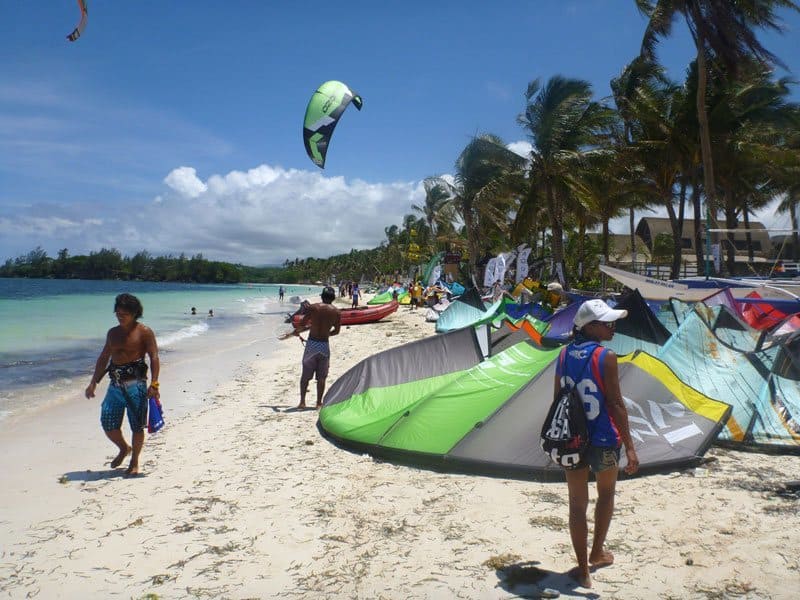
7. Zanzibar, Tanzania
Zanzibar is an archipelago 40km from the east coast of Tanzania, in the Indian Ocean. It is composed of the island of Zanzibar itself, the island of Pemba and other small islets. The island of Zanzibar itself has a length of 90km and 30km in its widest area. It is an impressive island, with white sand beaches and crystal clear waters, which make it a perfect vacation spot to relax.
In recent years Zanzibar has become very popular among kitesurfers thanks to the constant winds that hit the PAJE beach in the southeast of the island. In addition, the water temperature is around 27 ° C, so a lycra to protect from the sun is sufficient. The months of December to March and July to September are the most reliable in terms of the presence of the wind. Each period has a different wind:
- From June to September: the cross-shore wind known as Kusini predominates and it blows from the south with an average of 15 to 20 knots. In the evenings sometimes it rises even some more due to a thermal effect.
- From December to February: the Kaskazi wind that blows between 15 and 20 knots predominates although the direction is more changing.
Its beaches are ideal for both beginners and experts, thanks to its flat water and shallow lagoons. In addition, you can also enjoy other activities such as diving or fishing.
8. Essaouira, Morocco
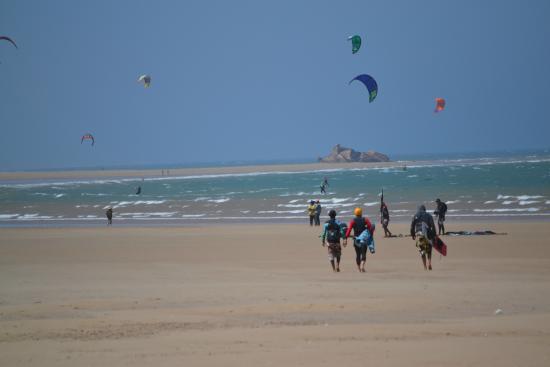 Kitesurfing in Morocco appears to be an ambition of almost every surfer. Essaouira can be found near the Atlantic side of Morocco, known as a world-famous fishing harbour, as well as a hotspot for beginners learning to Kitesurf. With the development of the Town in recent years, it has modernised itself, while still fully retaining the charm of the historic town.
Kitesurfing in Morocco appears to be an ambition of almost every surfer. Essaouira can be found near the Atlantic side of Morocco, known as a world-famous fishing harbour, as well as a hotspot for beginners learning to Kitesurf. With the development of the Town in recent years, it has modernised itself, while still fully retaining the charm of the historic town.
The island of Mogadishu primarily protects the bay from strong winds; however, some strong winds find their way to the beach. The vast beach is the perfect place for beginners to learn to launch themselves. The long, calm waves are ideal for individuals who are just beginners or keen to raise their skill level.
The best time of year to go is between April and October, especially during the summer months. However, Morocco maintains a relatively mild climate throughout the year, but the lack of winds makes this beach an excellent place for beginners to learn their craft in the summer.
9. Tarifa, Spain
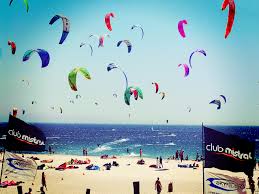
Undoubtedly the best kitesurfing location in Europe. Tarifa sits in the southern tip of Spain and is blessed with consistent winds, a warm climate, and a vibrant culture and entertainment scene. Tarifa is not the perfect spot to learn kitesurfing if you are 100% beginner, however is a good spot if you have some previous experience and you want to develop your skills.
Nicknamed as Europe’s “wind capital”, due to the 300 days of sun and wind it receives, Tarifa has some powerful strong winds, or, “Levante”, as called by the locals. This “Levante” makes its way from Gibraltar, and is most common between July and October, creating the perfect conditions for both learners and more advanced surfers.
However, you should be aware that these beaches can become very crowded during the summer months. So if you want to avoid the crowds, the best time of year is between April & June, and September & November.
10. Cabarete, Dominican Republic
Last, but certainly not least, is the longest and windiest beach in the Dominican Republic. The flat, turquoise water offers the perfect setting for beginners to learn to surf.
In this region, Kitesurfing is mainly practiced on two beaches, Cabarete Bay, and Cabarete Kite Beach. Protected by a long reef, they are only 15 minutes apart on the main beach. At the Cabarete Kite beach, beginners are advised to stay close to shore, where there is more than enough room for surfers. Further ashore, with stronger and more powerful winds, is where you can go to further develop your skills once you have gotten a firm grasp of the basics.
The best time of the year to go is the summer months, between June & August, due to its warm, tropical climate.
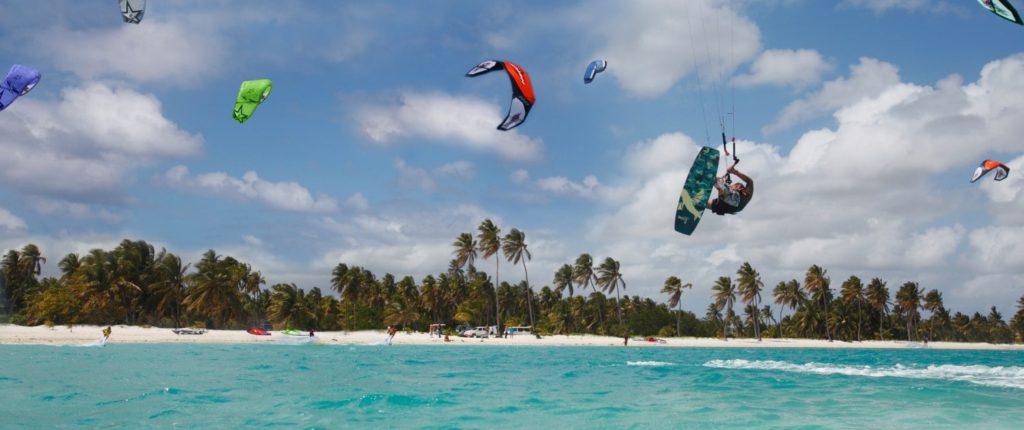
Have you decided your next destination to learn kitesurf, or not yet?
In conclusion then, it seems obvious that there is no best place to learn to Kitesurf. There are various beaches all around the world which have optimum conditions to learn.
Many beginners think that they will need exotic beaches, white sand and still, clear waters to begin to learn how to kitesurf. All this does is forces them into putting it off, waiting until they can afford a plane ticket to halfway around the world. The truth is, that the sooner you take lessons, the sooner you will learn to kitesurf.
We can’t promise you where the very best place is to learn to kitesurf. What we can tell you however, is when the best time to learn is. And that time is now, or at least, as soon as possible.
Thank you all for reading! And I wish you the very best of luck!

